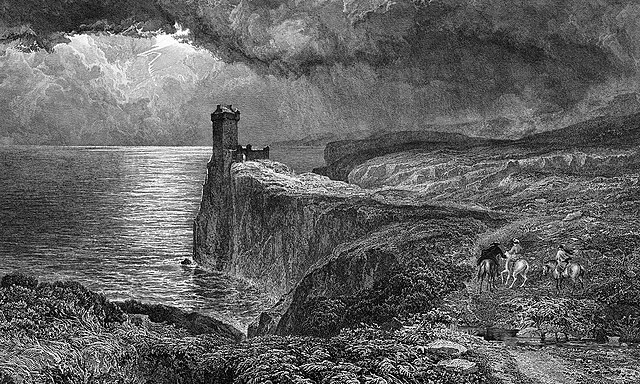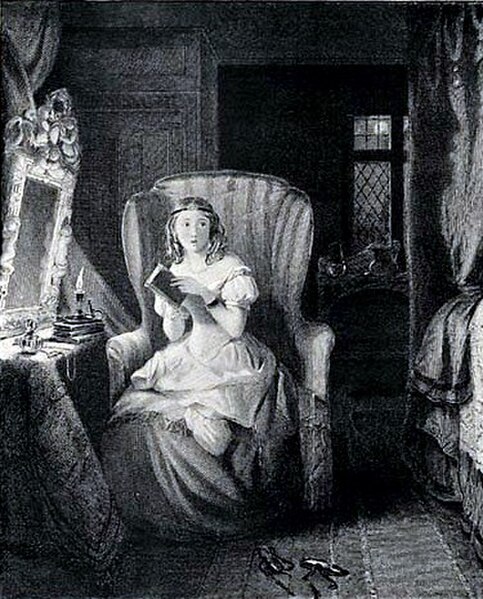The "Graveyard Poets", also termed "Churchyard Poets", were a number of pre-Romantic poets of the 18th century characterised by their gloomy meditations on mortality, "skulls and coffins, epitaphs and worms" elicited by the presence of the graveyard. Moving beyond the elegy lamenting a single death, their purpose was rarely sensationalist. As the century progressed, "graveyard" poetry increasingly expressed a feeling for the "sublime" and uncanny, and an antiquarian interest in ancient English poetic forms and folk poetry. The "graveyard poets" are often recognized as precursors of the Gothic literary genre, as well as the Romantic movement.
An illustration for Young's Night-Thoughts by William Blake.
Gothic fiction, sometimes called Gothic horror, is a loose literary aesthetic of fear and haunting. The name refers to Gothic architecture of the European Middle Ages, which was characteristic of the settings of early Gothic novels.
The ruins of Wolf's Crag castle in Walter Scott's The Bride of Lammermoor (1819)
Strawberry Hill, an English villa in the "Gothic Revival" style, built by Gothic writer Horace Walpole
The Gothic Temple folly in the gardens at Stowe, Buckinghamshire, UK, built as a ruin in 1741, designed by James Gibbs
Catherine Morland, the naive protagonist of Northanger Abbey (1818), Jane Austen's Gothic parody





